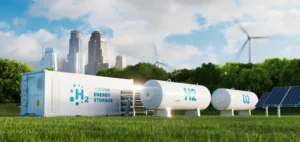The 600 MW hydrogen project in Angola, to which CWP Global has recently joined, represents a major strategic advancement for Africa. Developed in partnership with Sonangol, Gauff, and Conjuncta, this project is designed to exploit the excess capacity of existing hydroelectric production in Angola to produce hydrogen, with an electrolyzer capacity of 600 MW planned for its first phase.
This initiative is part of the country’s decarbonization goals and the national strategy “Angola Vision 2050”. The use of hydroelectric energy, a renewable and emission-free source, positions Angola as a key player in hydrogen production on the continent. In addition to meeting the global growing demand for hydrogen, the project also targets the production of ammonia, a strategic derivative intended for export.
Strategic Value and Impact for Angola
CWP Global’s project marks a turning point in Angola’s economic diversification, which currently relies heavily on its oil sector. By partnering with Sonangol, Angola’s national oil company, CWP Global aims to transform existing energy infrastructures to integrate hydrogen capabilities. The creation of a Special Purpose Vehicle (SPV) is planned to structure investments and ensure the governance of this large-scale project.
This economic diversification is essential to reduce Angola’s dependence on hydrocarbons and promote renewable energy sources. The project also contributes to the creation of local jobs and the development of skills in the clean energy sector, thereby strengthening the country’s economic resilience.
Positioning in the International Market
This project not only has a local impact: it aims to enter the global market for decarbonized energies by providing low-carbon fuel for hard-to-decarbonize industries, such as fertilizers and maritime transport, in Europe and elsewhere. Furthermore, the consortium aims to establish a green value chain in Angola, supported by existing port and transport infrastructures, while attracting international investments in the hydrogen sector.
Integration into the international market allows Angola to position itself as a strategic hydrogen supplier, meeting the growing needs of developed economies in terms of energy transition. This position also strengthens commercial relationships between Angola and its international partners, paving the way for future collaborations in the renewable energy field.
Development Perspectives
In terms of technical development, the project has already achieved significant milestones with the finalization of the partnership agreement and the start of the Front-End Engineering Design (FEED). The next step will be to mobilize investments for a final decision, expected before the end of the decade. The success of this project could make Angola a regional hub for hydrogen production, with significant economic and environmental benefits for the country and the continent.
Future development also includes expanding the ammonia production capacity, aiming to reach 400,000 tons per year in the first phase, with plans to increase this capacity in subsequent phases. This expansion will strengthen Angola’s position in the international green fertilizers market, contributing to more sustainable agriculture.
Challenges and Issues
However, the implementation of this project will depend on several critical factors, including the stability of local policies, capital mobilization, and the establishment of safety and transport standards suitable for hydrogen and ammonia exports. Additionally, coordination with European actors, already in demand for hydrogen sources, will be essential to ensure a stable and profitable outlet for Angola.
The project’s success will also require close collaboration among the different partners to overcome technical and financial challenges. Establishing favorable regulatory frameworks and engaging local stakeholders will be crucial to ensure the sustainability and profitability of this ambitious initiative.






















